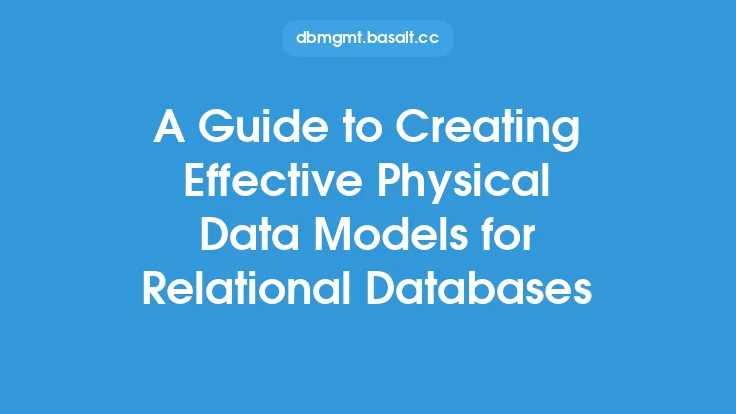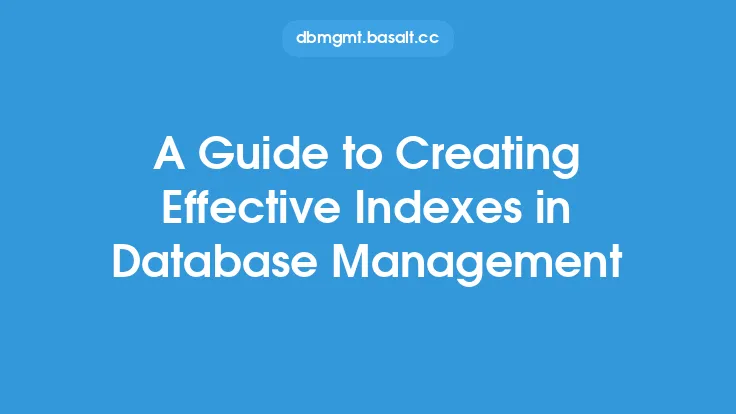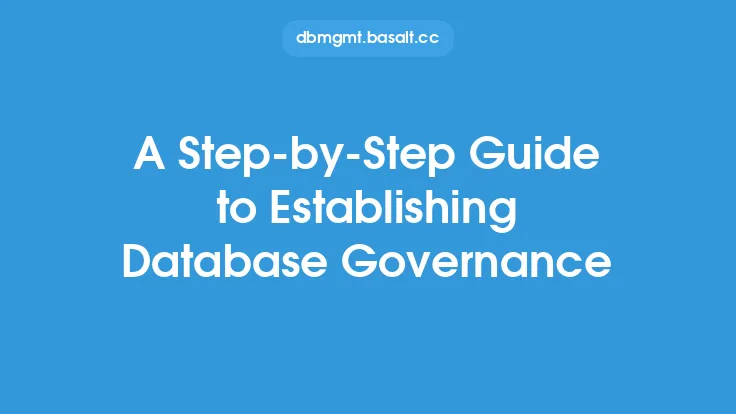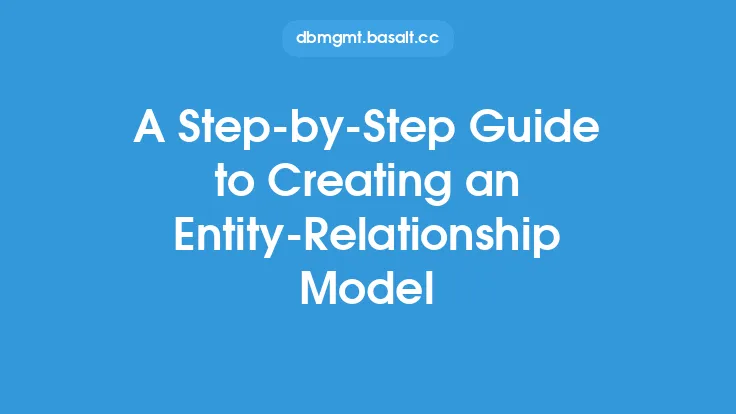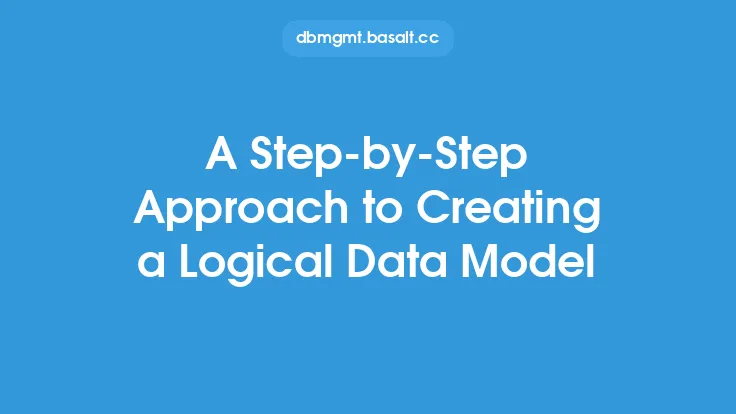Creating an effective conceptual data model is a crucial step in the data modeling process, as it provides a foundation for understanding the data requirements of an organization and enables the creation of a robust and scalable data architecture. A conceptual data model is a high-level representation of the data entities and relationships that are relevant to an organization, and it is used to communicate the data requirements to stakeholders and guide the design of the physical database.
Introduction to Conceptual Data Modeling
Conceptual data modeling is a technique used to create a conceptual representation of the data entities and relationships that are relevant to an organization. It involves identifying the key data entities, attributes, and relationships that are necessary to support the business processes and operations of the organization. The goal of conceptual data modeling is to create a model that is easy to understand, yet comprehensive enough to capture the complexity of the data requirements.
Identifying Data Entities and Attributes
The first step in creating a conceptual data model is to identify the key data entities and attributes that are relevant to the organization. Data entities are the objects or concepts that are of interest to the organization, such as customers, products, orders, and employees. Attributes are the characteristics or properties of the data entities, such as customer name, address, and phone number. To identify the data entities and attributes, data modelers can use techniques such as interviews, surveys, and observations to gather information from stakeholders and subject matter experts.
Defining Relationships Between Data Entities
Once the data entities and attributes have been identified, the next step is to define the relationships between them. Relationships can be categorized into three types: one-to-one, one-to-many, and many-to-many. A one-to-one relationship exists when one instance of a data entity is related to only one instance of another data entity. A one-to-many relationship exists when one instance of a data entity is related to multiple instances of another data entity. A many-to-many relationship exists when multiple instances of a data entity are related to multiple instances of another data entity. Defining the relationships between data entities is critical, as it enables the creation of a robust and scalable data architecture.
Using Entity-Relationship Diagrams
Entity-relationship diagrams (ERDs) are a common technique used to represent conceptual data models. An ERD is a visual representation of the data entities, attributes, and relationships that are relevant to an organization. It consists of entities, attributes, and relationships, which are represented using a set of standard symbols and notations. ERDs are useful for communicating the data requirements to stakeholders and for guiding the design of the physical database.
Normalization and Denormalization
Normalization and denormalization are two techniques that are used to optimize the conceptual data model. Normalization involves organizing the data entities and attributes into a set of related tables, each with a unique set of attributes. Denormalization involves combining related tables into a single table, which can improve query performance but may also introduce data redundancy. The goal of normalization and denormalization is to create a data model that is balanced between data consistency and query performance.
Data Modeling Notations and Standards
There are several data modeling notations and standards that are used to represent conceptual data models, including Entity-Relationship Modeling (ERM), Object-Role Modeling (ORM), and Unified Modeling Language (UML). Each notation has its own set of symbols, notations, and rules, and the choice of notation depends on the specific requirements of the project and the preferences of the data modeler. Data modeling standards, such as the Information Management Systems (IMS) standard, provide a set of guidelines and best practices for creating conceptual data models.
Best Practices for Creating Conceptual Data Models
To create an effective conceptual data model, data modelers should follow a set of best practices, including:
- Keep the model simple and intuitive
- Use clear and concise notation
- Avoid unnecessary complexity
- Use standard notation and terminology
- Validate the model against the business requirements
- Iterate and refine the model as necessary
Tools and Techniques for Creating Conceptual Data Models
There are several tools and techniques that are available for creating conceptual data models, including data modeling software, such as Entity-Relationship Diagram (ERD) tools, and data modeling methodologies, such as the Zachman Framework. Data modeling software provides a set of features and functions for creating, editing, and validating conceptual data models, while data modeling methodologies provide a structured approach to creating conceptual data models.
Conclusion
Creating an effective conceptual data model is a critical step in the data modeling process, as it provides a foundation for understanding the data requirements of an organization and enables the creation of a robust and scalable data architecture. By following a set of best practices, using standard notation and terminology, and leveraging tools and techniques, data modelers can create conceptual data models that are easy to understand, yet comprehensive enough to capture the complexity of the data requirements.
